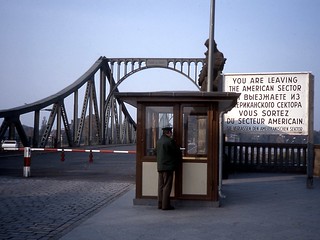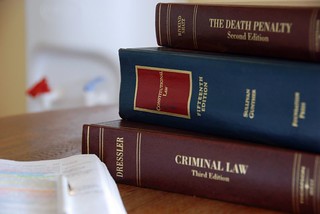 Like it or not, the Incredible Hulk smashes stuff. The Hulk at his core wants to defend the innocent from harm, but he also causes an enormous amount of suffering as he lays waste to anything in his berserk path. Patent litigation can feel like a collision with the Hulk. Both patent owners and alleged infringers will often feel smashed by patent litigation, regardless of who prevails. As patent litigation plods forward, it can abruptly careen out of control in startling ways. It’s kind of like the Hulk, who gains more gamma-radiation strength the angrier he gets. And like litigants trying to manage patent proceedings, Bruce Banner (the Hulk’s alter ego who is a brilliant scientist) cannot constrain the Hulk no matter how hard he tries.
Like it or not, the Incredible Hulk smashes stuff. The Hulk at his core wants to defend the innocent from harm, but he also causes an enormous amount of suffering as he lays waste to anything in his berserk path. Patent litigation can feel like a collision with the Hulk. Both patent owners and alleged infringers will often feel smashed by patent litigation, regardless of who prevails. As patent litigation plods forward, it can abruptly careen out of control in startling ways. It’s kind of like the Hulk, who gains more gamma-radiation strength the angrier he gets. And like litigants trying to manage patent proceedings, Bruce Banner (the Hulk’s alter ego who is a brilliant scientist) cannot constrain the Hulk no matter how hard he tries.
Would you have guessed that Bruce Banner’s cousin, Jen Walters, became embroiled in patent litigation? By day, Jen is an attorney juggling client matters, but off the clock she’s the She-Hulk kicking bad guy you-know-what. While the Hulk behaves as a raging brute, Jen retains her intelligence and controls her temper as the She-Hulk, who gained her gamma powers from a blood transfusion with Bruce.
In the graphic novel, She-Hulk: Law and Disorder, Jen agreed to represent a patent owner, a widow of an independent inventor. The emerald heroine thought that she could quickly negotiate a settlement with the alleged infringer, the distinguished Tony Stark of Iron Man fame. However, Jen didn’t get to meet with Tony. Instead she was intercepted by Tony’s lawyer, who gave her the run-around. Jen abandoned negotiations, saying, “I’ll just see you in court.” But in court, things did not go well for Jen as she got inundated with motions from her opposing counsel, and each motion required her response. Later, the jade giantess felt discouraged and confided to her client, “I was thinking that the scope of this thing is getting a little out of control—I thought this would be a two-minute chat with Tony Stark.”
Disagreeing Without Being Disagreeable
Before the chaos began with out-of-control scope, the She-Hulk had the right idea to try to negotiate early. But if she had followed the Understanding Method of conflict resolution promoted by Gary Friedman, her goal would have been more than just a two-minute chat. If she and her client had really desired to understand the problem and work to a solution, three discussions could have occurred in patent mediation. Patent mediation can be especially effective when attorneys, managers, and technologists all participate to discuss law, business, and technology.
First, Discuss the Applicable Law
With the Understanding Model, the first discussion is about the law. For the She-Hulk, this discussion would focus on intellectual property. As Gary Friedman points out, the purpose of discussing the law is for the attorneys to educate the managers about the impact of the law on their case. This discussion is preferably done in three stages:
- Each attorney explains the strengths of each side’s legal position. The emphasis here is the impact the law will have on the parties, more than the substance of the law.
- Each attorney then explores the risks of each side’s legal position. This makes the law understandable for the managers who are already experienced with SWOT to strategically analyze business weaknesses.
- Next, each attorney describes the practical consequences of going to court if an agreement is not reached. Often, this is a description of the costs to attempt to reach a favorable ruling.
This systematic legal conversation could have provided the She-Hulk with an opportunity to share with her opposing counsel a cooperative, rather than an adversarial, view of the legal reality facing her client and Tony Stark. Such a cooperative view would have helped her client and Tony find a mutually favorable outcome.
Second, Discuss the Business Issues
After the managers understand the legal realities facing their companies, they discuss their business realities. Depending on the relationship between the parties, this discussion can take many forms, as mangers explain their business situation to each other. For the She-Hulk, her client could have explained to Tony Stark that she was in possession of additional repulsor technology from her deceased husband, and that she would like to license the trade secrets to Stark Industries, which could have significantly benefited Iron Man.
Third, Discuss the Technology
In patent mediation, it is not enough to understand the legal and business realities. Everyone should also understand the realities around the technology. To do that, technologists from both companies meet together to understand the technologies as presented in the patent disclosure and as implemented in the alleged infringement. In the She-Hulk’s case, there was a lot to understand around the repulsor technology that technologists could have clarified.
Negotiate Based on Understanding
After these three discussions have occurred, the parties can negotiate together to find a resolution. Of course, this patent mediation process is significantly longer than a two-minute chat that the She-Hulk had anticipated. While the process may appear time consuming, it could have avoided her client’s courtroom confrontation and empowered her client to determine beneficial settlement proposals.
Calm the Rage
Patent litigation is hard on everyone, even for someone as tough as the She-Hulk. Before getting too entangled in such a clash, it is prudent to try to reach an agreement through patent mediation as early as possible. But even with early mediation, both plaintiffs and defendants may feel Hulk-like rage at the patent enforcement process. Please remember that while patent litigation is often a grueling course of action to have a patent case decided, our patent system has historically been a world-class empowerment of citizens from all walks of life to be inventors. According to Marshall Phelps, a former VP at Microsoft:
The world’s first democratized patent system bequeathed to us by our Founders was the crucial engine that powered our industrial growth in the nineteenth century and made us the preeminent economic super power that we are today.
Speaking of our country’s Founders, in the next post we’ll look at a Founder’s own ravaging encounter with alleged patent infringement. His name? None other than Thomas Jefferson.
Image: “Universal She-Hulk” (CC BY 2.0) by JD Hancock.
Source: Friedman, Gary, and Jack Himmelstein. Challenging Conflict: Mediation Through Understanding. American Bar Association, 2008, pp. 137-69.
Source: Phelps, Marshall, and David Kline. Burning the Ships: Intellectual Property and the Transformation of Microsoft. Wiley, 2010, pp. 153-67.

 In Stephen Spielberg’s movie
In Stephen Spielberg’s movie  According to
According to  Demonstrating the rubric of faster-better-cheaper (called “FBC”), NASA will be taking a new tack into space exploration. However, not everyone has come aboard on the faster-better-cheaper ship. NASA engineers often respond to faster-better-cheaper by demanding: “Pick two!” For example, with software development it is generally believed that if a project’s scope increases (better), then either the completion time increases (slower) or the people expense increases (costlier). Because of the pick-two response of engineers, there is often a debate over whether faster-better-cheaper is all that NASA’s leadership has claimed it to be. Nevertheless, it appears that
Demonstrating the rubric of faster-better-cheaper (called “FBC”), NASA will be taking a new tack into space exploration. However, not everyone has come aboard on the faster-better-cheaper ship. NASA engineers often respond to faster-better-cheaper by demanding: “Pick two!” For example, with software development it is generally believed that if a project’s scope increases (better), then either the completion time increases (slower) or the people expense increases (costlier). Because of the pick-two response of engineers, there is often a debate over whether faster-better-cheaper is all that NASA’s leadership has claimed it to be. Nevertheless, it appears that  It turns out that there was method to Van Halen’s madness. Have you heard the story of
It turns out that there was method to Van Halen’s madness. Have you heard the story of  There is a saying that dogs don’t bark at parked cars. It’s funny how a dog will chase what’s in motion and ignore what is standing still. In reality, just because something is moving doesn’t mean it deserves attention. In conflict, the issue you are facing may be the equivalent of a moving car. But you might want to consider whether the parked car of an emotion might also deserve some thought. After all, an emotion may actually be what’s driving your decisions.
There is a saying that dogs don’t bark at parked cars. It’s funny how a dog will chase what’s in motion and ignore what is standing still. In reality, just because something is moving doesn’t mean it deserves attention. In conflict, the issue you are facing may be the equivalent of a moving car. But you might want to consider whether the parked car of an emotion might also deserve some thought. After all, an emotion may actually be what’s driving your decisions. I hope none of us are ever in such dire straits as Mark Watney, the character from the
I hope none of us are ever in such dire straits as Mark Watney, the character from the